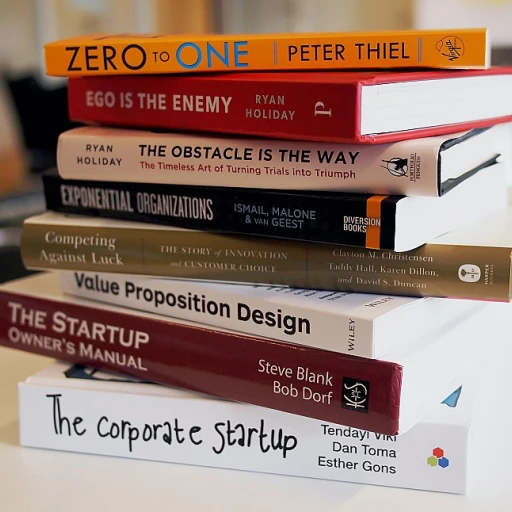
Understanding the Evolving Role of CxOs
Evolving Leadership Requirements for the Modern C-Suite
In today's increasingly complex business landscape, the role of the CxOs is continuously evolving. The traditional leadership roles have expanded, requiring a sophisticated blend of strategic insight, technological acumen, and emotional intelligence. The Expanding Scope of ResponsibilitiesThe job description of a CxO now includes responsibilities that traverse both traditional and emerging fields. CxOs are expected to operate not just as leaders of their divisions but as dynamic orchestrators aligning departmental functions with the overall business strategy.
- Chief Experience Officers are now crucial in shaping customer and employee experiences to drive engagement and enhance organizational effectiveness.
- Chief Marketing Officers are tasked with ensuring that marketing initiatives are deeply customer centric, leveraging digital tools to glean insights and adapt strategies.
To achieve desired business outcomes, CxOs must lead by inspiring their teams to collaborate cross-functionally. This requires executives to build relationships beyond silos, nurturing a culture where team members are invested in both short-term achievements and long-term goals.
- Experience leaders focus on creating cohesive strategies that encompass the customer experience, patient experience, and employee engagement.
- Contact centers and customer service frameworks must be aligned with the company's broader strategic vision to maintain consistency and satisfaction.
Increasingly, CxOs are functioning as stewards of change, guiding initiatives that not only fulfill business imperatives but also foster a resilient organizational culture. As highlighted in articles about effective coaching and mentoring, it's critical for CxOs to actively engage in cultivating talent and fostering leadership at every level within the organization. In navigating these complexities, CxOs must balance their roles between being visionaries and practical executors, ensuring that their strategy aligns with actionable outcomes. As businesses continue to evolve at a rapid pace, so too must the competencies and focus areas of those at the executive helm.
Aligning Vision with Execution
Bridging Vision and Execution
The role of CxOs is dynamic, often serving as the bridge between high-level vision and tangible business outcomes. This calls for a nuanced understanding of how a company's strategic direction translates into everyday actions and results. In translating vision to execution, experience management holds a significant position. It aids in turning strategic aspirations into practical initiatives that align with customer and employee values. Key elements to focus on include:- Clear Communication: One of the primary responsibilities of a CxO is articulating the company's vision to the organization effectively. This communication should cascade down through vice presidents, directors, and team members, ensuring everyone aligns with the same goals.
- Customer-Centric Model: An effective strategy bridges vision and execution by focusing on customer-centric business models. CxOs must embed customer experience into the fabric of every operation. This approach drives more enduring business results by connecting customer service and satisfaction directly to strategic objectives.
- Data-Driven Decisions: Leveraging data is essential for modern CxOs. Data from various sources such as marketing efforts, customer feedback, and employee engagement can guide strategic adjustments. Engaging with data allows leaders to refine execution strategies in real time and ensure alignment with long-term vision.
- Empowering Cross-functional Teams: The success of strategy execution often hinges on the strength of the teams involved. Promoting collaboration among different units within the organization helps synchronize efforts toward achieving strategic goals. Empowering teams by aligning them with the vision can boost innovation and improve both customer and employee experiences.
- Balanced Initiatives: A well-crafted execution plan balances short-term successes with long-term vision. Executives must remain patient and maintain focus on sustainable practices that propel the company forward while addressing immediate market demands.
Leveraging Technology for Strategic Advantage
Embracing Technology as a Catalyst for Change
In the rapidly evolving business landscape, technology has emerged as a critical driver of strategic transformation for CXOs. Executives must not only comprehend the potential of cutting-edge technologies but also effectively integrate them into their organizational framework to achieve desired business outcomes. For those in the role of the chief experience officer, leveraging technology is crucial. This involves utilizing advanced data analytics to provide valuable insights into customer and employee experiences, ultimately enhancing the company's performance. The integration of data-driven strategies allows CXOs to fine-tune their initiatives, leading to improved customer service and more effective experience management. Moreover, technology plays a pivotal role in transforming the contact center into a hub of innovation and efficiency. By adopting state-of-the-art tools and systems, CXOs can ensure their organizations remain agile and responsive to customer needs, solidifying their customer-centric strategy. This approach not only leads to superior customer experiences but also fosters a culture that emphasizes continuous improvement. The job description of modern CXOs now encompasses a deep understanding of technology's impact on operational performance and strategic growth. This emphasizes the need for executives to stay abreast of technological advancements that can propel their organizations forward. Ultimately, the journey of navigating strategic challenges as a CXO requires leveraging technology not as a mere tool, but as a fundamental component of strategic thinking. By doing so, business leaders can build resilient organizations positioned to thrive in a dynamic and competitive environment.Building a Resilient Organizational Culture
Creating a Culture of Resilience and Adaptability
Building a resilient organizational culture is crucial for CxOs striving to navigate today's complex business landscape. In an era marked by constant change and unexpected disruptions, organizations need to develop an adaptive culture that can effectively respond to new challenges while seizing emerging opportunities. In this dynamic environment, the CxO’s role requires a keen focus on fostering a culture that prioritizes agility and resilience. This approach involves cultivating a team that is not only prepared to tackle immediate obstacles but is also equipped for long-term transformation. Key initiatives should include:- Encouraging Open Communication: Establishing channels for transparent communication helps employees feel valued and informed. This strategy can boost morale and facilitate a more responsive organization.
- Promoting Continuous Learning: By offering regular training and development opportunities, CxOs can ensure that employees are equipped with the latest skills and knowledge, preparing them to handle unforeseen challenges.
- Emphasizing Strong Leadership: Empowering leaders at every level of the organization to embody resilience ensures that team members have mentors to guide them through transitions.
Balancing Short-term Wins with Long-term Goals
Striking the Balance for Sustainable Success
The CxO's role in navigating short-term wins alongside long-term goals is crucial to maintaining sustainable growth. While immediate achievements can boost morale and provide quick wins for the business, it's imperative that executives balance these with strategic foresight to steer the company in the right direction. Understanding the dual mandate of achieving short-term objectives without compromising long-term success necessitates:- Data-Driven Decision Making: Leveraging data allows CxOs to see beyond immediate challenges and identify trends that influence future business outcomes. This data-centric approach ensures that each short-term initiative supports broader strategic goals.
- Fostering a Rich Experience Culture: By emphasizing customer and employee experience, business leaders can create a resilient organization that thrives in both stable and volatile situations. Experience management fosters loyalty and adaptability, which are key to long-term resilience.
- Engaging Cross-Functional Teams: CxOs should collaborate with team directors and leverage the expertise of the chief experience officer, marketing officer, and other key leaders. This promotes alignment across the organization and ensures that short-term successes do not disrupt long-term aspirations.
- Setting Clear, Measurable Goals: Defining clear objectives for both short and long-term initiatives aids in aligning the company's vision with execution. Clear goals help quantify progress and provide motivation across all team members.
Enhancing Stakeholder Engagement
Strengthening Stakeholder Relationships
In the landscape of modern business, the cxo role is increasingly defined by the ability to foster robust relationships with stakeholders. These relationships are not simply about maintaining communication channels; they are about building trust and demonstrating value creation over time. For cxos, this requires a keen understanding of both internal and external dynamics, as the responsibilities of a chief officer span a variety of strategic touchpoints.
First and foremost, customer experience should remain a central focus. Executives such as the chief marketing officer or experience officer are tasked with aligning marketing efforts with customer expectations, ensuring the organization's message resonates at every touchpoint. Additionally, experience leaders need to champion data-driven initiatives that enhance the customer's journey, turning insights from customer service and the contact center into actionable strategies.
Beyond external stakeholders, the experience of employees is pivotal. Engaged, motivated team members drive business outcomes, directly impacting customer employee interfaces and overall service quality. Building a resilient internal environment, as previously discussed, involves understanding employee feedback and integrating it into the organization's long-term goals.
Strategic engagement with other executives and directors is also crucial. This involves nurturing a network that connects the experience insights from various sectors, such as business, company, and team dynamics, ensuring that all areas of the organization move in harmony towards collective objectives.
Finally, a cxo must perpetually assess and refine their approach to stakeholder engagement. This is not a static process but a continual effort of adaptation and innovation, leveraging technology and data to maintain relevance and ensure that the voice of the organization resonates with its audience.














